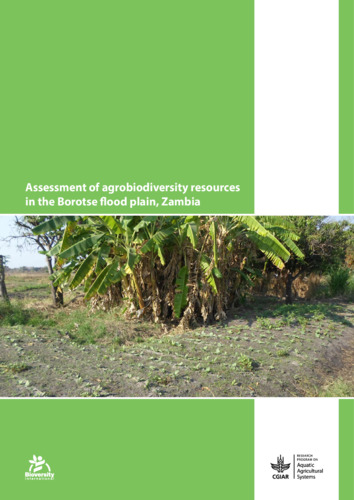Assessment of agrobiodiversity resources in the Borotse flood plain, Zambia
Concerns about perceived loss of indigenous materials emerged from multiple stakeholders during consultations to plan and design the CGIAR Research Program on Aquatic Agricultural Systems for the Borotse hub in Zambia’s Western Province. To come to grips with and address the concerns, the AAS Borotse hub program of work included an assessment of agrobiodiversity to inform community-level and program initiatives and actions. The agrobiodiversity assessment comprised three components: key informant and expert surveys complemented by review of grey and published literature, focus group discussions in the communities, and individual household surveys. This working paper reports the findings from assessments of agrobiodiversity resources in the Borotse hub by key informants and local experts working in government ministries, departments and agencies, and non-governmental organizations operating in the communities.This working paper covers the following topics: agriculture in the Borotse flood plain; major agricultural land types in the Borotse flood plain; soils and their uses; production systems; crops, including the seed sector and ex-situ resources; indigenous materials collected from the wild, including non-perennial and perennial plants, aquatic plants, and forest biodiversity; fish resources, including both capture fisheries and aquaculture; livestock resources; dietary diversity; and indigenous and local knowledge on management systems.

